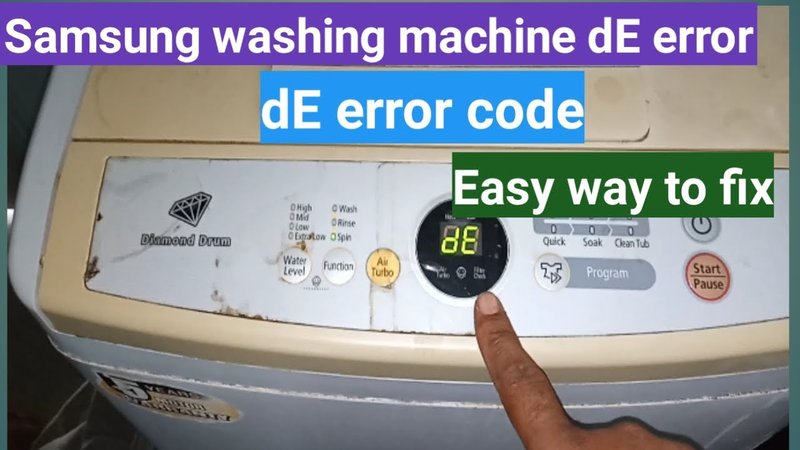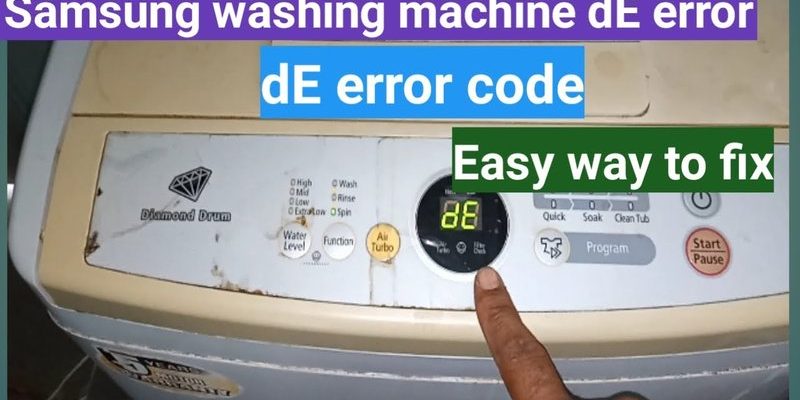
In essence, the error code F1 indicates a fault in the washing machine’s main control board, which acts like the brain of your appliance. Just as our brains send signals to our bodies to perform certain tasks, the control board directs the washing machine’s operations. When this code appears, it’s like when our brains get confused and send out a mixed signal—something is wrong with the communication system. The question is, is it safe to continue using your washing machine when this happens? Let’s delve deeper to understand this better.
Understanding the Error Code F1
Here’s the deal: error code F1 might sound like a daunting problem, but it’s essentially a signal pointing toward an issue with the control board. But what exactly is going wrong? Think of the control board as the central hub that manages everything your machine does, from filling water to spinning the drum. When the F1 error shows up, it suggests that the control board is struggling to perform its duties. This could be due to something as simple as a loose connection or as complex as a faulty chipset.
Now, you might be wondering, “Why does this happen?” Well, there are a few common causes. Sometimes, electrical surges or fluctuations can disrupt the control board’s functions. Imagine a sudden spike in power as a lightning bolt striking and briefly paralyzing the brain—it’s alarming and can leave the system in disarray. Other times, moisture or a buildup of dust within the machine can lead to connectivity issues, much like how dirt in a socket can prevent a plug from fitting correctly.
But here’s an essential point: while the F1 code signals a problem, it doesn’t automatically mean your washing machine is unsafe to use. However, it does mean the machine might not function as expected. It’s like driving a car with a flashing engine light—you might still reach your destination, but you’re taking a risk. To ensure safety and efficiency, it’s vital to address the error promptly.
Steps To Address Error Code F1
So, what should you do if the dreaded F1 error code appears? First, try restarting the machine. Just like rebooting a computer can solve many IT issues, turning off the power to your washing machine for a while can sometimes reset the system. Unplug it, wait for a minute or two, and then plug it back in. This simple act can sometimes “reset” the control board and clear the error.
If rebooting doesn’t work, it may be time to inspect the machine more closely. Check for visible signs of damage or loose connections. Imagine your machine like a puzzle; each piece needs to be in its correct position for the whole picture to make sense. Carefully look for any disconnected wires or components that might have shifted. If you’re not comfortable doing this yourself, it’s wise to call a professional.
If you’ve tried these steps and the error persists, the control board may need a replacement. This step is more akin to replacing a vital organ, so it can be costly and requires expertise. Contacting Samsung support or a certified technician can guide you through this process safely and efficiently.
Preventative Tips and Final Thoughts
Preventing the F1 error code involves regular maintenance, much like you’d keep a car running smoothly with routine check-ups. Ensure your washing machine is plugged into a surge protector to guard against electrical disruptions. Keeping the area around and inside the machine clean can prevent dust and moisture from causing havoc on the control board.
Additionally, consult your machine’s manual for any recommended maintenance schedules or tips directly from Samsung. Being proactive can often save you from the headache of unexpected issues. Also, consider reaching out to Samsung’s customer service for advice tailored specifically to your model.
In conclusion, while the F1 error code is certainly something that needs attention, it doesn’t have to spell disaster. By taking the right steps promptly, you can ensure your Samsung washing machine continues to serve you well, without only papering over the cracks but effectively fixing the root of the issue. Remember, safety first—addressing problems early can prevent them from escalating and keep your laundry days running smoothly.
